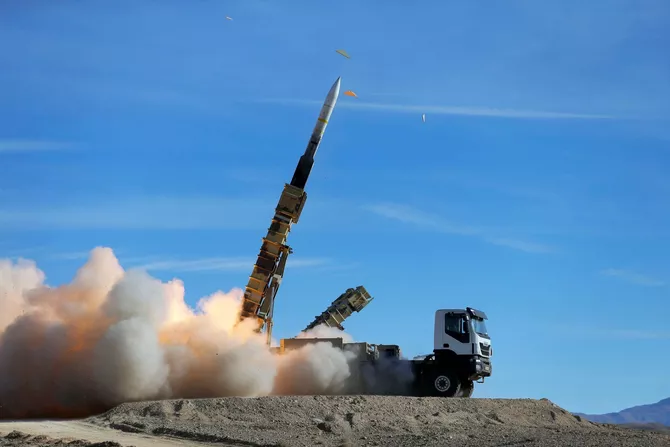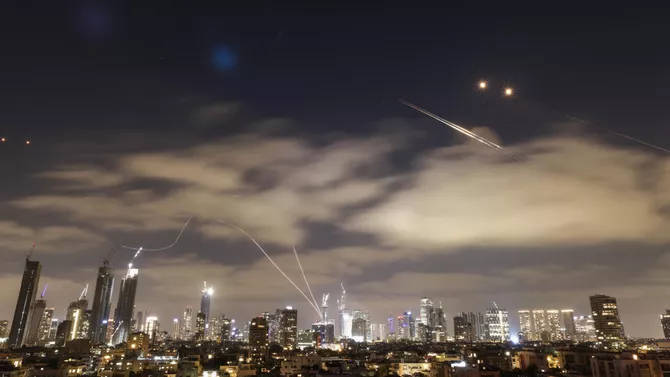
Photo credit: Al Arabiya
Israel’s planned strike was not a secret - and it’s no coincidence that U.S. President Donald Trump told Israeli Prime Minister Benjamin Netanyahu just days ago that the United States would not take part in an attack on Iran.
Trump also urged Netanyahu not to act before the negotiations with Tehran concluded. But Netanyahu did not wait.
Although an Israeli strike on Iran was widely anticipated, it still shocked both the Islamic Republic and the broader international community. In the early hours of June 13, Israel launched a large-scale attack on several of Iran’s nuclear facilities, air defense systems, and other military infrastructure.
According to Israeli sources, dozens of radars and surface-to-air missile launchers were destroyed. The Israel Defense Forces (IDF) claimed that among those killed in the overnight strikes were Islamic Revolutionary Guard Corps (IRGC) Commander Hossein Salami, Chief of the General Staff Mohammad Bagheri, and Emergency Operations Commander Hatam-Gholam Ali Rashid.

(Iranian Leader Press Office / Handout/Anadolu via Getty Images, left, and Fatemeh Bahrami/Anadolu via Getty Images, right. )
Iran has confirmed Salami’s death. Moreover, the Iranian Tasnim news agency reported the killing of nuclear scientist and former head of Iran’s Atomic Energy Organization Fereydoon Abbasi. In total, six nuclear scientists were reportedly killed, and 95 others were injured across various parts of the country.
Israel deployed around 200 fighter jets in the operation, dropping over 330 munitions on approximately 100 targets.
In retaliation, Iran launched more than a hundred drones toward Israel. These UAVs were expected to reach Israeli territory within several hours, but according to The Times of Israel, the Israeli Air Force began intercepting the drones in time, and none have so far penetrated Israeli airspace. Most interceptions occurred outside Israel’s borders - particularly over Jordan.

Photo credit: besacenter
Following the Israeli strikes, Brigadier General Abolfazl Shekarchi, spokesperson for Iran’s Armed Forces, told IRNA news agency: “The Islamic Republic of Iran will definitely retaliate, and the enemy will pay a heavy price… Israel and the United States will suffer and be hit hard.”
If Israel attacks Iran’s nuclear facilities, Tehran is likely to respond with significant force and potentially large-scale casualties. According to Channel 24 citing Axios, U.S. Special Envoy Steve Witkoff warned Republican senators in a closed-door meeting that such a scenario could unfold.
According to U.S. intelligence, Iran possesses about 3,000 ballistic missiles, with at least 2,000 capable of carrying a warhead weighing no less than 1,000 kilograms. Iran produces roughly 50 ballistic missiles per month, totaling around 600 per year. A significant number of these missiles are capable of reaching Israeli territory. Iranian military sources have also claimed that the country has developed a new ballistic missile with a warhead exceeding 1,800 kilograms.
Despite widespread condemnation of Tel Aviv’s actions, military experts acknowledge that Israel executed the operation with high precision, and its intelligence capabilities far surpass those of Iran. So far, fears that Iran’s response could cripple Israel’s air defense systems have not materialized.
The events of the past night have exposed Iran’s unpreparedness to confront Israel. Experts point to the inactivity of Iranian air defenses. Strategic sites were left exposed and vulnerable. In accordance with standard protocol, the mass deployment of Israeli fighter jets should have been detected, prompting the activation of Iran’s air defense systems and the scrambling of fighter aircraft to intercept the attackers before they entered Iranian airspace. None of this occurred - despite the fact that Tehran had foreknowledge of Netanyahu’s intentions and should have been ready.
Iranian experts explain this failure by suggesting that Iran had recently received a large volume of intelligence from Israel but had not yet had time to analyze it. They claim that once the data is reviewed, Iran will select clear retaliatory targets. For now, there is no clear answer as to why Iran’s air defense systems failed to respond.

Photo credit: france24
According to the Military Balance 2025 report by the International Institute for Strategic Studies (IISS), the IRGC Aerospace Forces possess more than 100 medium-range ballistic missile launchers capable of striking targets over 1,000 kilometers away - a range sufficient to hit Israel, as reported by CNN.
Iran’s missile forces are equipped with both solid-fuel and liquid-fuel ballistic missiles. Liquid-fuel missiles carry heavier high-explosive warheads - weighing 1,200 kilograms or more - compared to about 500 kilograms for most solid-fuel variants. However, solid-fuel missiles have the key advantage of being launch-ready at any time, while fueling liquid-propellant missiles can take several hours.
According to CNN, ballistic missiles launched from Iran can reach Israel in approximately 15 minutes. Iran also has an array of drones and cruise missiles capable of reaching Israel, although these may take hours to arrive due to the long distance. They also carry smaller warheads and are more vulnerable to Israeli air defenses.
The same report notes that Iran’s air force has around 265 operational aircraft, but most are outdated U.S.-made fighters from the Cold War era. These would require mid-air refueling to reach Israeli targets - and Iran has fewer than five aerial refueling aircraft.

Photo credit: CNBC
During last year’s flare-up between Iran and Israel, The Wall Street Journal reported, citing reliable sources, that Iran was considering using significantly more powerful warheads in any retaliatory strike against Israel. According to unnamed Iranian and Arab officials, Tehran was prepared to go beyond its usual tactics of launching conventional missiles and drones. The sources emphasized that the munitions being considered for future operations could far exceed the destructive power of previous attacks.
The most alarming reports pointed to Iran’s development of a “comprehensive response” to Israeli actions - possibly indicating plans for a large-scale military operation, according to The Wall Street Journal.
It is worth recalling that on October 1, 2024, Iran carried out a large-scale direct strike on Israel in retaliation for the assassinations of Hamas leader Ismail Haniyeh and Hezbollah Secretary-General Hassan Nasrallah. Earlier in April, Iran had launched over 300 ballistic and cruise missiles, as well as attack drones, at Israel. Yet despite the size and intensity of that assault, the actual damage inflicted on Israel was minimal.
By Tural Heybatov
Share on social media